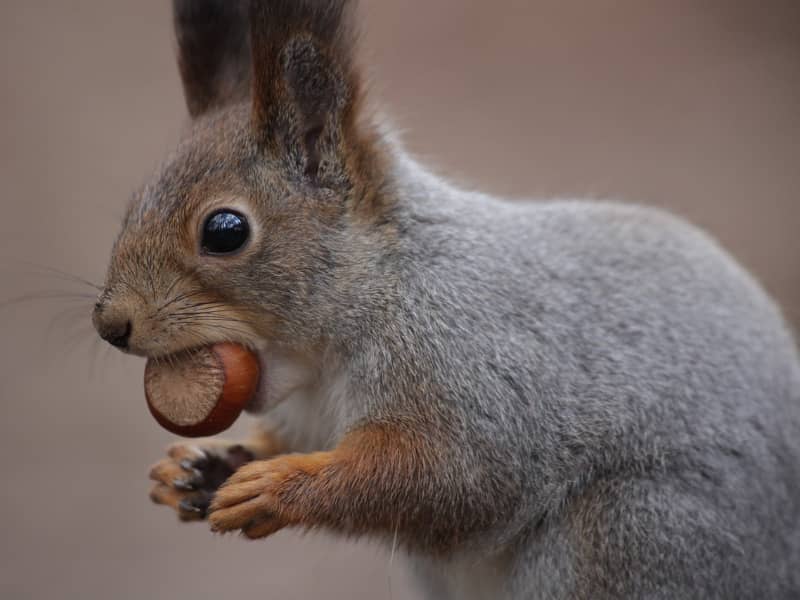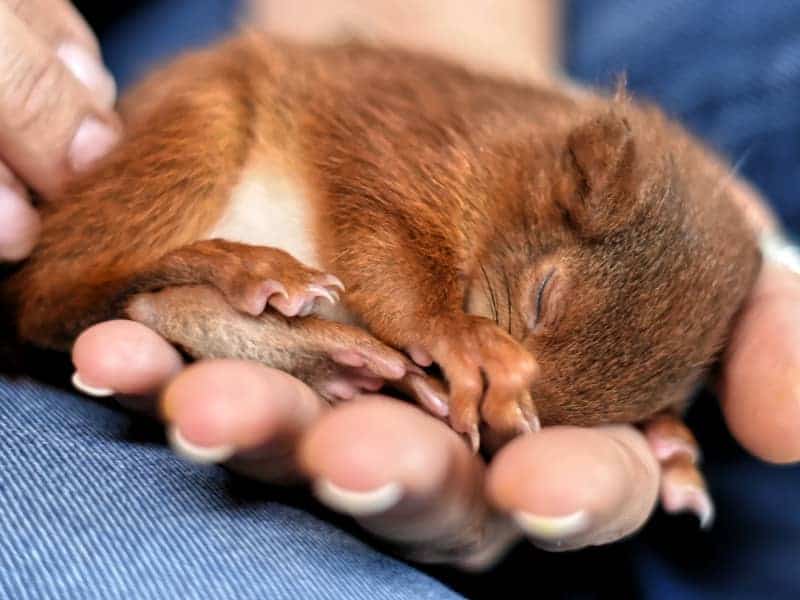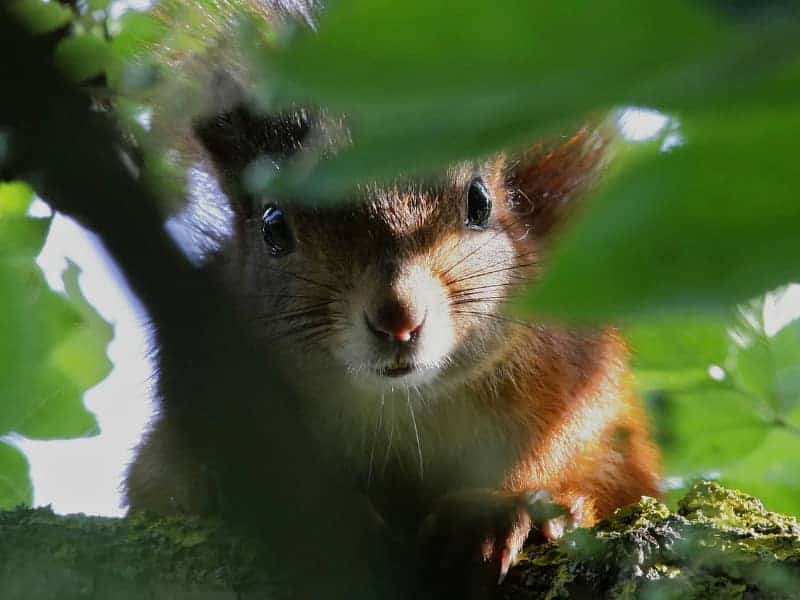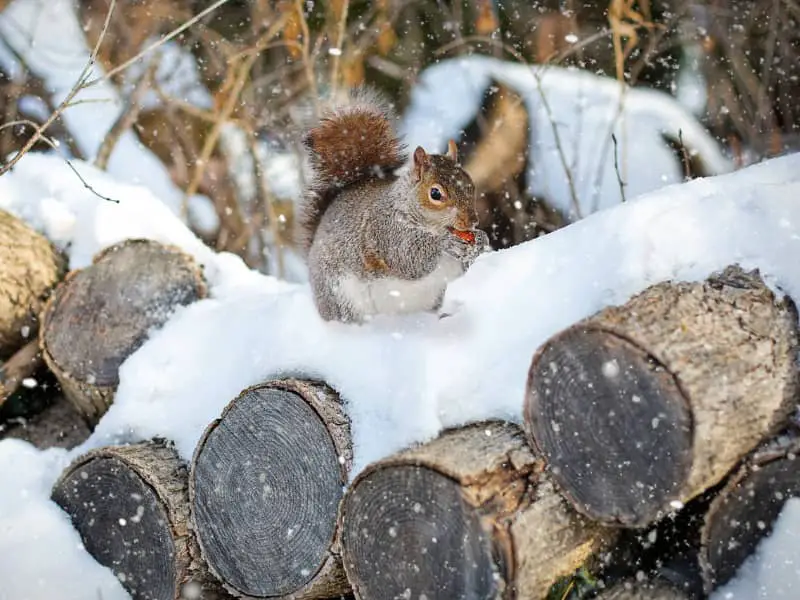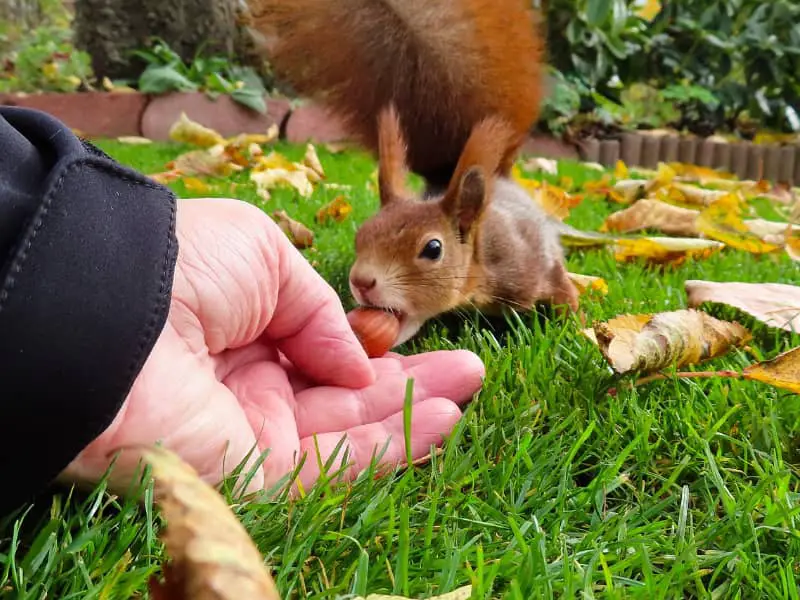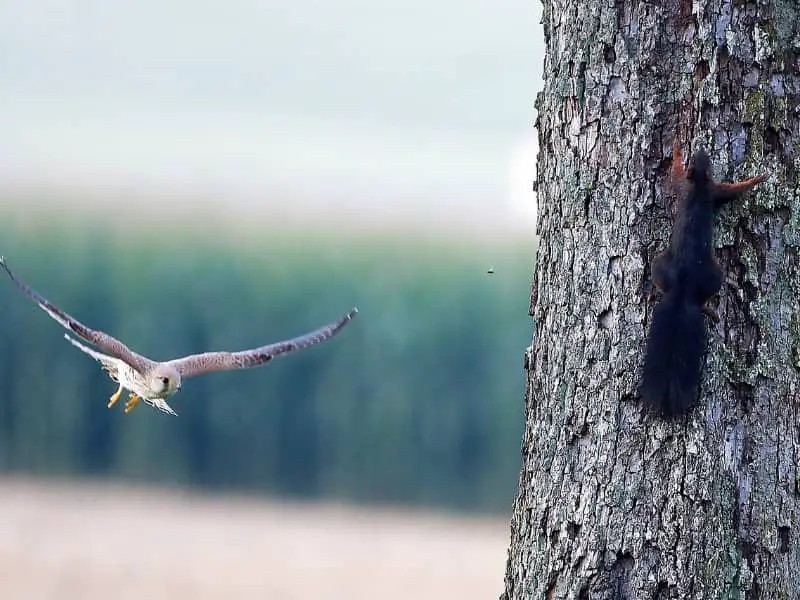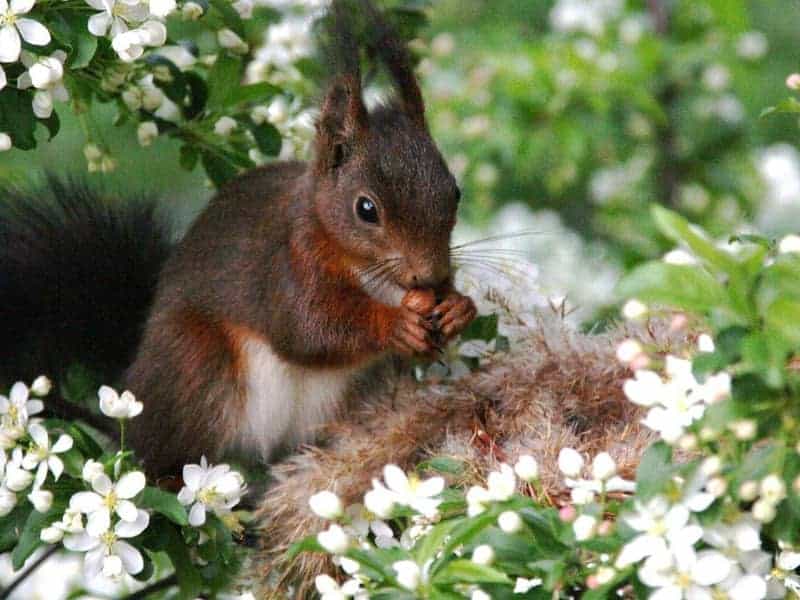
What nesting material in the squirrel hutch?
The right nesting material for the squirrel hutch the animals look for themselves in nature. In addition to twigs and branches, the animals also collect leaves, moss, feathers, thin strips of tree bark or animal skins.
Provided nesting material for squirrels Kobel
You can also help the small rodents by providing them with nesting material for the Squirrel Kobel for your use.
Unfortunately, more and more of the natural habitat for the small rodents is destroyed. They do not find the necessary nesting material and are happy if you help them.
It is important that you do not simply put the nesting material into the hutch. Squirrels like to set up their hutch themselves. You can place the nesting material for the squirrel hutch in a place protected from the rain. Make sure that it is not blown away by the wind.
The small rodents get what they need to finish their goblet. Especially in the garden you will hardly have trees with a height of 5 or 10 meters. The squirrels often build their hutch in a shed, under a table on the terrace or on the balcony.
What squirrel nesting material can you buy?
On the one hand, you can provide the squirrels with twigs, branches, leaves and the like, following nature's example. But you can also use ready-made nesting material. You have the choice between:
- Coconut fibers
- Hemp fibers
- Hemp wool
- Other plant fibers
- Forest Moss
- Kapok (plant down)
- Corn Flax
- Fake skins or real skins
- Sisal
In any case, pieces of fabric are not suitable. These absorb moisture but do not release it. As a result, mold can form. Threads can also be pulled from the fabric, which can be dangerous to both the mother and the babies.
Where does the squirrel build its hutch?
If it has the possibility, the Kobel is built far up in branch forks of trees. However, this then also means that the nesting material for the squirrel gobble must be transported far upwards.
If you don't have a tall tree in your yard, you can attract the rodents by offering them a substitute burrow.
What does a kobel look like?
It is usually a hollow sphere with two or more entrances. The diameter in most cases is 50 cm. Several entrances and exits are important so that the squirrel can quickly escape in case of need.
For the construction rodents use, in addition to twigs of brushwood and moss. Then for padding leaves, feathers and other soft things are used.
If you provide plenty of garden waste from your yard in the fall, the squirrel won't have to search laboriously for building materials.
It is not uncommon for squirrels to be hit by cars in residential areas because they have to cross busy roads to find nesting material for the Squirrel Kobel to compile.
Build Kobel
If you are handy, you can provide the rodent not only the nesting material for the squirrel hutch. You can weave the hutch from willow rods and already place a little nesting material in it. The squirrels will then do the rest themselves.
Instructions for weaving from willow rods can be found on the Internet. In any case, make sure that the hutch is sufficiently stable. In addition, the hutch should be as windproof and waterproof as possible.
Squirrel nesting material and nest made of wood
If you do not manage to weave a hutch for the squirrel from willow rods, then you can build a shelter from wood. Very suitable for this purpose are maple, beech or pine. These woods withstand the weather conditions well.
Make sure that the wood is not chemically treated. During construction, you must ensure that all edges are cleanly finished. No splinters should stick out. The animals could injure themselves.
The nesting material for the squirrel house is the same as for the hutch. Put a little moss in it. Place other nesting material nearby so that the squirrel can set up its house.
The perfect size for the squirrel house
The base area should be at least 26 x 26 cm. At the same time the roof panel must be slightly larger. It should protrude so that rainwater can not run into the house.
The diameter of the entrance holes should be at least 8 cm.
If you have followed these points, you can prepare the nesting material for the squirrel wooden hutch.
Author

-
Garden animal - A life with nature
Welcome to my animal blog! My name is Dirk and I am happy to take you on my journey through the fascinating world of animals and gardening.
Born 54 years ago, I have had an insatiable curiosity for the animal world around me since childhood. Although I have moved professionally in other industries, my true passion has always been animals and nature. It is remarkable how a small garden has become such an important part of my life.
Many of my fondest memories are associated with the animals that share our home. Whether it's the curious squirrels that scurry across the trees in the morning, the colorful variety of birds that visit our feeders, or the busy bees and butterflies that pollinate our flowers, every moment with them is invaluable to me.
This blog is my contribution to share my experiences, discoveries and insights with like-minded people. Here I will share stories of unforgettable encounters with animals, give tips on gardening and creating wildlife-friendly habitats, and take you on my journeys through nature.
Thank you so much for being here!
Cordial,
Dirk aka garden animal
Last posts
- 27. February 2024PetsVeganes Hundefutter – Grün und Gesund?
- 18. January 2024ChickensOregano für Hühner
- November 27, 2023HamsterDiurnal hamsters
- November 24, 2023HamsterHamster hammock

